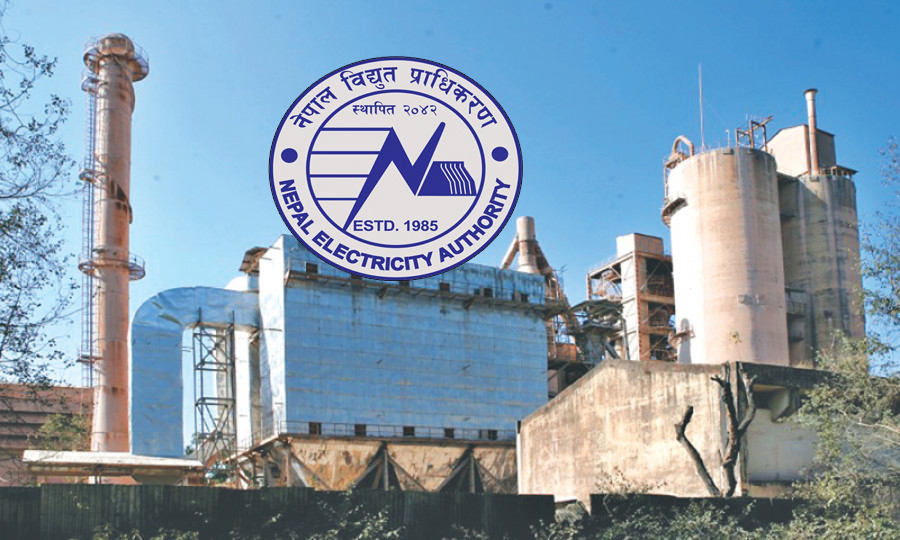Energy Update
Industrial sites continue to be hammered by power outages

Factories say they are being hammered by irregular electric supply and voltage fluctuations even though the Nepal Electricity Authority claims load-shedding has ended at industrial sites. Plant operators fear erratic voltage more because it shortens the service life of their machinery.
Manufacturing plants in eastern and western Nepal have been complaining about industrial load-shedding to the state-owned power utility since February. The utility said it had to cut power supply for 14 hours to the Morang-Sunsari industrial corridor in April because it was not able to import electricity from India due to the high cost.

Nepal has to fall back on imported power in the winter when domestic output drops to one-third of the installed capacity because of reduced water flow in the rivers. The hydroelectric projects in the country have a combined installed capacity of over 2,000 megawatts. Power cuts at manufacturing plants have caused a drop in production besides damaging expensive equipment, say industrialists.
Factory workers at Gharana Foods in Bhairahawa recall an incident when they had just put wheat in the water to make flour when the power went out and never came back. They said 1.8 tonnes of wheat was almost ruined. Wheat is soaked in water for 24 hours before being processed.

According to Gharana Foods, they scrambled to salvage the wet wheat which was dried to prevent it from going to waste. “We would have incurred a loss of Rs6.12 million if the wheat had spoiled,” said Vikash Goenka, managing director of Gharana Foods.
Many enterprises are facing problems because of the unscheduled blackouts. “We did not have electricity in our factory for five days last week,” said Goenka. “Even when there is power supply, it only lasts a few hours during the daytime. The capacity utilisation of the factories has gone down as a consequence.”
Industrialists have long been accusing the Nepal Electricity Authority of telling untruths. While the power utility has been downplaying the blackouts as a temporary phenomenon, plant owners say there are prolonged outages that come without any warning.
“Even when we have electricity, we were told to use it only for lighting and operating fans and motors to pump water,” said Goenka. In the past weeks, at least four dozen factories in the Butwal-Bhairahawa industrial corridor have been suffering from outages. In particular, factories receiving electricity through 33 kV transmission lines were badly hit.
“The power utility continued to supply electricity using 11 kV lines to small-scale firms, so they faced no problems,” said Ujjwal Kasaju, president of the Butwal Chamber of Commerce and Industry. “But the big factories that are connected through 33 kV electric lines did not get any power for long periods.”
Saroj Poudel, general manager of Supreme Cement in the Butwal-Bhairahawa industrial corridor, said they had to stop production for many days due to outages. “Even when there was power supply, we had to cut output because of fluctuating current.”
Entrepreneurs say that disruptions in power supply and inconsistent voltage has not only made operating factories difficult, but increased their production costs too.
The Bara-Parsa industrial corridor in the eastern region is going through a similar problem.
“There are power cuts lasting more than 12 hours. This has reduced our production capacity to 30-35 percent,” said Subodh Kumar Gupta, president of the Birgunj Chamber of Commerce and Industry.
But officials at the Nepal Electricity Authority say industrialists should not have to worry about power anymore as domestic production is increasing because of rising water levels in the rivers due to the melting of snow in the Himalaya.
“Our plants are now producing 1,100 to 1,200 megawatts,” said Kul Man Ghising, managing director of the Nepal Electricity Authority. “Even with minimum energy imports from India, we can guarantee regular power supply to both general and industrial consumers by operating the storage-type Kulekhani Hydropower Project.”
According to the power utility, Nepal’s peak hour demand is around 1,700 megawatts, and it has been managing the necessary power supply by generating more energy through peaking projects like the 456 megawatt Upper Tamakoshi Hydropower Project.
Peaking power stations can produce more electricity during peak hours by using water stored in their reservoirs in contrast to run-of-river plants that use water flowing in a river.
In April, India stopped supplying electricity under a fixed price arrangement from Muzaffarpur, Tanakpur and Bihar after the price of coal, which is used to produce electricity, rose steeply.
“In the last few days, our bids to buy electricity from India’s power exchange market have been successful, and we have been importing relatively more electricity,” said Ghising. “Within a month, we will have surplus power and will be exporting power to India instead.”
Conversation
- Info. Dept. Reg. No. : 254/073/74
- Telephone : +977-1-5321303
- Email : [email protected]












.jpg)

